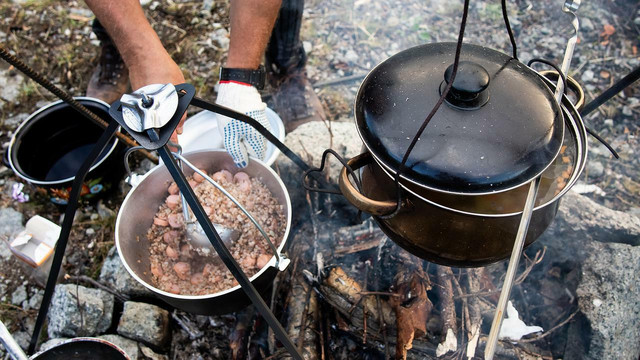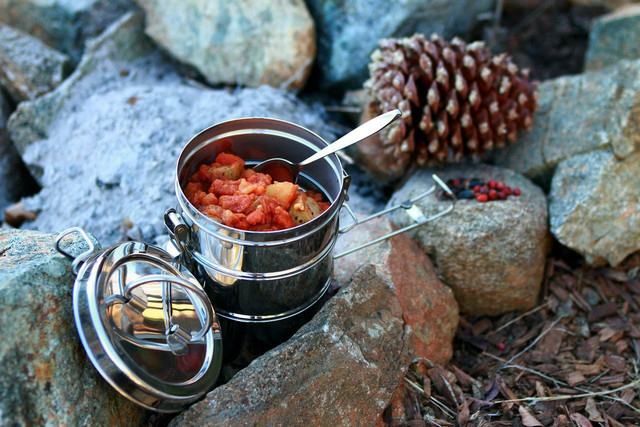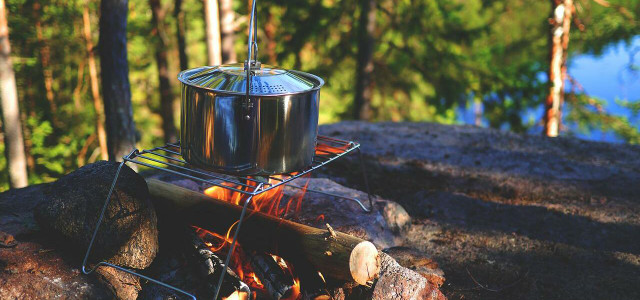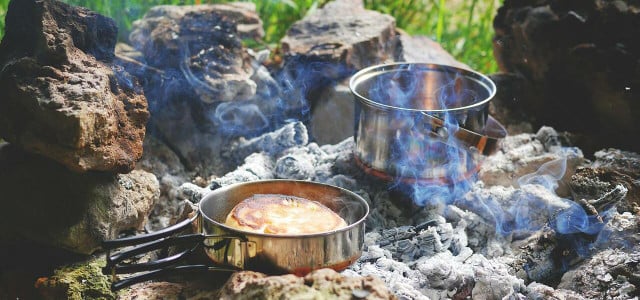Learn how to make DIY backpacking meals before a long backpacking adventure. Our guide will help you make healthier, tastier, and more environmentally-friendly meals for your trip.
With the right preparation, you can enjoy plenty of nutritious and delicious meals when backpacking.
There are various packaged, freeze-dried meals that are handy when backpacking. But these prepared meals are not only less nutritious compared to homemade meals, but come with single-use plastic packaging and create excess trash on your wilderness adventure. They can also be bulkier and heavier than homemade backpacking meals.
Learning how to make DIY backpacking meals will not only save you money, but are also a more eco-friendly choice. They are also customizable to your diet, and can be made in the exact portion size you need.
How To Make Backpacking Meals at Home

(Foto: CC0 / Pixabay / Marina_Kratko)
If you’re planning a long trip, you’ll want to start preparing your backpacking meals well in advance. You may want to invest in a dehydrator if you take frequent backpacking trips, as dehydrated food is both long-lasting and lightweight. Here are the key elements to consider:
- Bases: Starchy foods like pasta, noodles, rice and oats can act as the base for your DIY backpacking meals. They are fairly cheap, quick to cook and contain the carbohydrates needed to fuel your hike. It’s important to keep in mind that base ingredients that have been cooked and dehydrated in advance will cook faster on the trail.
- Vegetables: Freeze-dried vegetables can be bought in most outdoors stores, or easily online. However, these generate more packaging and waste. It’s best to choose vegetables that don’t need to be cooked, like carrots, bell peppers, broccoli, or zucchini.
- Protein: Proteins like tofu, tempeh, lentils or black beans are the perfect foods to bring backpacking. You can choose to either buy pre-cooked beans or lentils and deyhydrate them, or cook them yourself before dehydrating. Mixed nuts are just as good, plus they work really well as toppings on savory dishes, oatmeal and as an on-the-go snack. They will also provide you with the proteins needed to fuel your action-packed days while backpacking.
- Fats: Fat is very important when backpacking, as you need plenty of calories before and after long days of walking. The best fats to bring while backpacking include olive oil, coconut oil, powdered cheese, powdered butter, powdered coconut milk and powdered peanut butter.
- Seasonings: Packing all kinds of seasonings and spices can really improve a backpacking meal. Popular spices include smoked paprika, cumin, Italian herbs, powdered onion and garlic, stock cubes and homemade Old Bay seasoning.
Once you have gathered your bases, vegetables, proteins, fats and seasonings, you’re ready to start packing your meals. You should place all your ingredients for each meal in their own reusable, resealable bags ready to be cooked.
Depending on your camping setup, you can simply boil water in a saucepan, add the contents of the bag, and cook until hot.
How To Reduce Waste for DIY Backpacking Meals
For the ingredients you are dehydrating, opt for fair trade products and organic produce, and choose products that use minimal packaging. You can also reduce waste by choosing the right packaging for your DIY meals.
The most sustainable and lightweight packaging option for backpacking meals are resealable, reusable bags that will protect your food from the elements. The best options are sturdy plastic or silicone bags that can be washed and reused for multiple trips. More sustainable options like stainless steel or glass containers likely aren’t suitable for a long backpacking trip, but are a good option for a shorter one.
13 Easy Backpacking Meal Ideas



(Foto: CC0 / Pixabay / LisaRedfern)
Here are just some ideas for highly nutritious, healthy and flavorful meals you can prepare for your backpacking trip:
- Tempeh fajita bowl: Use quinoa or rice as your base along with smoked tempeh, black beans and Mexican spices.
- Quinoa/red lentil chili: Cook quinoa or red lentils with tomato puree, smoked paprika, cumin and add kidney beans and other veggies for this nutritious backpacking meal.
- Creamy, garlicky pasta alfredo: Combine powdered garlic and powdered coconut milk with water to make the sauce for this creamy pasta dish. Add white beans and broccoli and season with lots of salt.
- Pasta marinara: Make this hearty and filling meal using tomato puree, olive oil, dried basil and powdered garlic.
- Thai peanut noodles: Soba noodles combined with powdered peanut butter, whole peanuts, tofu and veggies of your choosing make this an easy and super tasty DIY backpacking meal.
- Thai red coconut curry: Red curry paste mixed with powdered coconut milk, powdered peanut butter and topped with chopped peanuts is a creamy, filling and protein-packed meal.
- Fried rice: A classic backpackers meal, you can top it with tofu, loads of veggies and soy sauce.
- Ramen: Back to basics with this one. All you will need to do is boil noodles in a broth made from stock, powdered onion and garlic, stock cubes and soy sauce. Add tofu or tempeh and any veggies you want.
- Moroccan tofu couscous: Couscous cooked with moroccan spices, a stock cube and mixed with dried apricots and chopped almonds make this a winner every time.
- Sweet potato peanut stew: Sweet potato cubes cooked in stock, powdered coconut milk and powdered peanut butter make a truly delicious backpacking meal.
- Risotto rice and vegetables: Precook the risotto rice using stock, Italian herbs, and lots of salt and pepper. Add in any vegetables you like and finish with powdered cheese.
- Cinnamon quinoa porridge: Cook the quinoa with lots of cinnamon, some honey or sweetener if you have, and topped with nuts and dried fruits.
- Ginger and raisin porridge: Start your day off right by cooking oatmeal, mixing in powdered ginger and topping with raisins and nuts.
Read more:
- Hiking in the Rain: 8 Tips for Safety & Comfort
- 8 Tips That Make Hiking With a Baby Easy & Fun
- Best Hiking on the East Coast: 7 Amazing Trails
Do you like this post?








